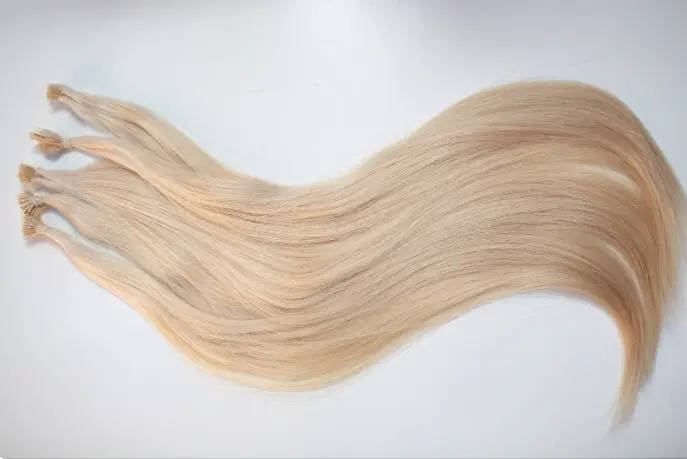The journey with hair extensions can dramatically transform your look, but it’s just as important to understand the right time and method for removal. Attempting to take out extensions on your own increases the risk of damaging your natural hair. In the UK, more people are recognising that safe and effective removal is best left to experienced professionals. With the company Ivana Farisei hair extensions removal is expertly handled to preserve your hair’s integrity without unnecessary breakage or loss.
Professional techniques and tools ensure that your scalp remains healthy and that your hair retains its strength, while also preventing costly errors resulting from at-home methods. Understanding when to seek this expert assistance is key to maintaining beautiful, healthy hair, whether you wear tape-ins, keratin bonds, or micro rings.
Recognising the Risks of At-Home Hair Extension Removal
The allure of convenience often tempts individuals to remove extensions at home. Yet, this shortcut can cause irreversible damage to both natural hair and scalp. Many over-the-counter solvents and DIY tools are not tailored for the specific type of bond holding your extensions in place. Misuse can result in chemical burns, extensive breakage, or uneven hair texture. This is especially critical for popular styles like micro ring or pre-bonded keratin extensions, which require precision for safe extraction.
Improper removal methods may also leave behind adhesive residue or inadvertently pull out healthy strands. If you’ve noticed excessive shedding, scalp irritation, or find that your extensions are becoming increasingly tangled with your natural hair, these are red flags that signal the need for professional intervention. Expert technicians use purpose-designed solutions and gentle techniques that minimise trauma to hair follicles. Furthermore, specialists can assess the condition of your extensions and your hair’s health—advising when immediate removal is essential to prevent exacerbation of issues.
Another consideration is timing. Extensions left in beyond their recommended wear period can mat with new hair growth, making removal much more challenging and potentially painful. Professional stylists in the UK are trained to recognise these timing thresholds. They can also safely tackle complex situations, such as partially detached bonds or mixed extension types, which often require customised strategies for safe and thorough removal.
In summary, the risks of DIY removal—from bald spots to scalp sensitivity—far outweigh the initial savings of skipping a salon visit. Those who value their hair’s long-term health should rely on trained hands and specialised tools, ensuring a seamless transition back to natural hair or to a fresh set of extensions.
When to Consult a Specialist for Hair Extensions Removal
While some may try to stretch their extensions’ lifespan, regular maintenance and periodic professional assessments are essential for lasting results. Recognising the signs that it’s time for professional removal can prevent headaches and preserve your investment in high-quality hair.
Firstly, if your extensions feel unusually tight, cause discomfort, or create tension headaches, immediate removal by an expert is imperative. Continued stress on the roots can lead to traction alopecia, a condition marked by gradual hair loss due to pulling forces. Similarly, if you observe visible build-up, matting near the roots, or if the extensions are slipping out, a technician should evaluate and remove them to protect your scalp and hair.

Moreover, seasonal shedding or hormonal changes may alter how well your extensions hold. If you find your natural hair has become brittle, or if you’ve recently undergone a chemical service—such as bleaching or coloring—that may compromise attachment points, it’s especially prudent to have a professional oversee the process. In situations where you’re upgrading your style, such as switching to a different system or exploring the options that Ivana Farisei offers on its website ivanafarisei.co.uk how much is extensions for hair - an expert can ensure safe removal and prepare your hair for the next application.
For those with sensitive skin or pre-existing scalp conditions, specialist oversight is crucial. Salons can apply medical-grade removers and incorporate soothing treatments unavailable to the average consumer. Equally, if you’ve had your extensions in for more than the manufacturer’s recommended period—often 8 to 12 weeks for most systems—the likelihood of tangling and damage increases exponentially. Delaying removal raises the risk of breakage, uneven hair, and even infection.
In summary, if you experience any unusual discomfort, notice visible signs of damage, or simply want assurance that your extensions will be removed with minimal impact on your natural hair, seeking a professional is the most reliable approach. UK salons and trained technicians adhere to the highest standards, ensuring the process is both efficient and safe.
Expert Removal Techniques for Different Types of Hair Extensions
Not all extensions are created equal—each attachment method demands unique removal expertise. The rising popularity of micro rings, keratin bonds, weaves, and tape-ins in the UK means that many women now rely on professional salons for transition and maintenance.
When it comes time to remove your extensions, professionals employ the following steps:
- Assessment of Extension Type and Bond: Technicians examine the bond method—micro ring, keratin, tape, or weave—to select the correct solvent and tools.
- Targeted Application of Remover: Professional-grade removers are applied specifically to dissolve adhesive or soften keratin bonds, never over-saturating the hair.
- Gentle Manipulation and Removal: Extensions are carefully slid, opened, or dissolved without tugging or pulling, minimising stress on natural strands.
- Inspection and Cleaning: Once removed, the scalp and remaining hair are inspected for build-up, and any residue is thoroughly cleansed.
- Aftercare Advice and Scalp Soothing Treatments: Clients receive tailored aftercare recommendations, including hydration treatments, to restore the hair’s health and shine.
These measures ensure extensions are removed efficiently and without harm, preparing the scalp for new extensions or a break from enhancement systems. Whether dealing with seamless tape-ins or the more intricate bonds of flat tip hair extensions, trained professionals are equipped to handle any scenario.
Long-Term Hair and Scalp Health After Extensions Removal

Proper removal is just the beginning of healthy hair recovery. Once extensions come out, your natural hair may need targeted care to regain strength, elasticity, and moisture. UK stylists often recommend a tailored aftercare plan consisting of nourishing masks, scalp massages, and periodic trims to revive your hair’s natural beauty.
If you notice thinning, breakage, or dryness, address these concerns early with restorative treatments such as protein-infused conditioners, oil-based serums, and scalp exfoliators. The phase after removal is an ideal time for a professional assessment. Trained technicians can identify early signs of traction or chemical damage and suggest in-salon improvements or at-home regimens. Consistent trims and avoiding heat styling for a few weeks further support a full, healthy regrowth cycle.
For those planning to reapply extensions, following specialists’ recommendations about downtime and scalp treatments is essential. This proactive approach helps your natural hair remain resilient and ready for future applications, ensuring your next extension experience is even better.
Choosing the Right Professional for Hair Extensions Removal in the UK
Quality of service matters. Selecting a reputable technician or salon with a proven track record in hair extensions removal can make all the difference. Seek out professionals who specialise in various systems and who are transparent about their methods and aftercare. Read reviews, ask about credentials, and don’t hesitate to request before-and-after portfolios. By prioritising experience and technical expertise, you not only protect your natural hair but also ensure your next style journey starts from a place of strength and health.
When to Seek Professional Help for Hair Extension Removal